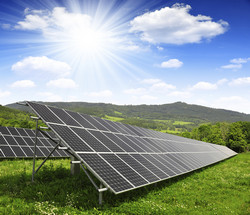Improved solar energy prediction
The energy output of concentrating solar power systems and photovoltaic systems is among the most difficult variables to forecast. Topography, clouds and aerosols all affect solar energy predictions. In other words, reliable weather forecasting is essential for ensuring that solar energy technologies meet clean energy goals. Funded by the EU, the project SOLFORRENEW (A comprehensive framework for high-resolution assessment and short-term forecasting of the solar resource for renewable energy applications) aimed to improve weather predictions crucial for energy management. Project activities included active engagement with scientists from the National Center for Atmospheric Research (NCAR) in Boulder, the United States. NCAR is one of the lead organisations developing the Weather Research and Forecasting (WRF) model, testing and distributing the code to weather research communities. In its latest versions, the WRF includes different short-wave solar irradiance models for users to select. One of them is the Rapid Radiative Transfer Model for General Circulation Models (RRTMG). SOLFORRENEW used RRTMG to estimate global horizontal irradiance, direct normal irradiance and diffuse irradiance. The model runs were fed with aerosol and water vapour observations from Aerosol Robotic Network (AERONET) stations and the Moderate Resolution Imaging Spectroradiometer (MODIS) onboard the Terra satellite. The role of aerosols was investigated by running the model with and without aerosols. Under clear sky conditions, the main factors driving surface solar irradiance are aerosols, water vapour, surface albedo and ozone. Because the variability of surface albedo and ozone is small, these were fairly well approximated using seasonal climatologies already included in the WRF. However, accurately predicting the climate system requires knowledge of the role of aerosols in the Earth's energy budget, as this is described in numerical weather models. With the research carried out in the SOLFORRENEW project, the WRF will become a powerful tool for solar energy now casting and forecasting.







